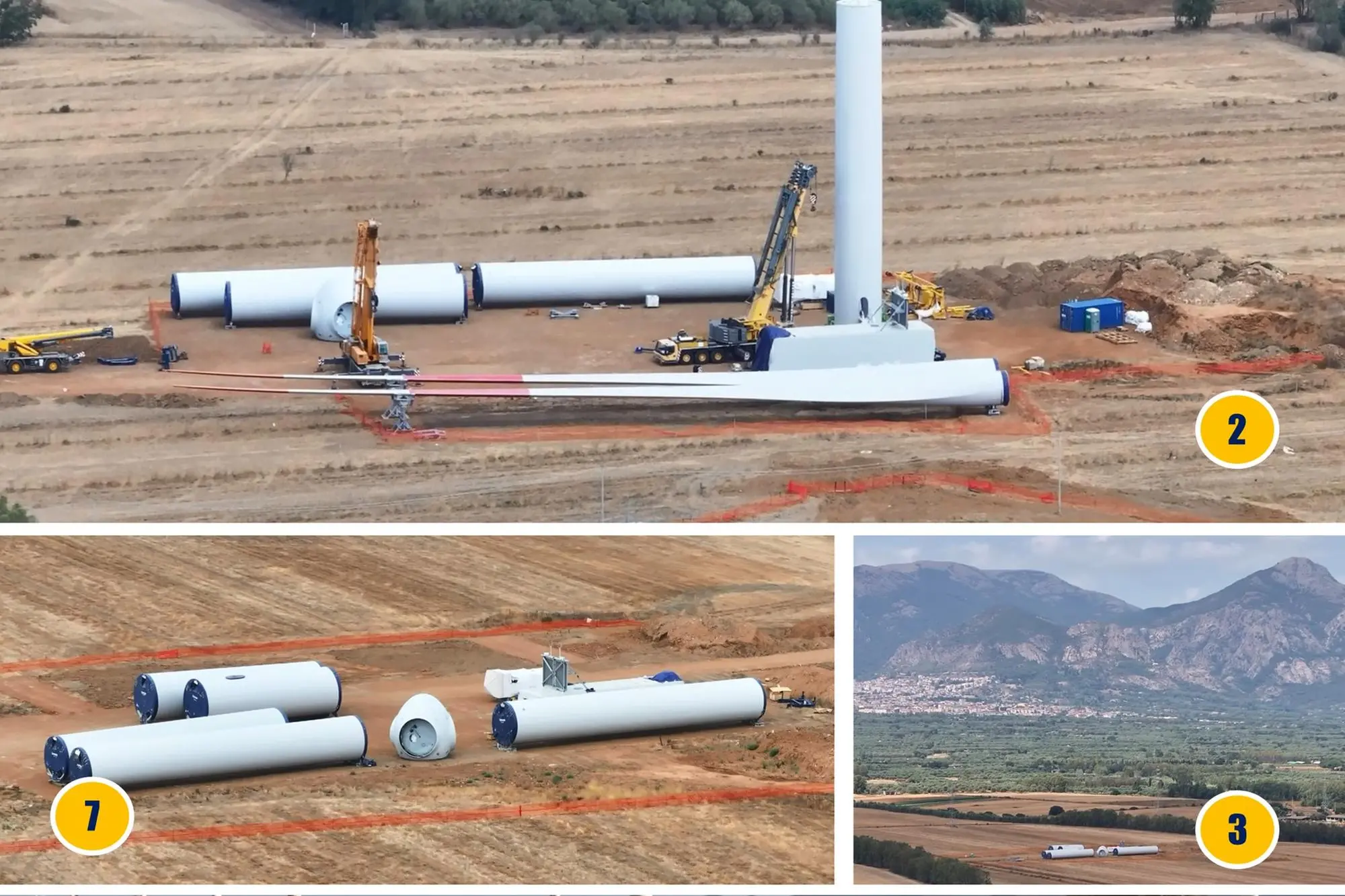Wind energy, "irreversible" devastation begins
Cyclopean load of "Chinese" panels just arrived on the slopes of Mount Arcosu, assault of shovels on Mount LinasPer restare aggiornato entra nel nostro canale Whatsapp
The "steel arms" of the wind cranes that came from afar began to climb onto the horizon of the great mountain of the "Land of Shadows". The skyline of Villacidro has always been Monte Linas, an indelible mark of the archaic history of a "middle ground", between the Campidano and the Marmilla, between the Oristano area and the Cagliari area. Initially the slopes were devastated by petrochemistry and primary metallurgy, with the Snia chimneys and the San Gavino foundry, then the first wind towers arrived from Bolzano and the surrounding area, placed there in front without knocking on the door of Sa Spendula. The "shadows" of those first high-sea flying "slicers" crashed as a "foretaste" of an immense energy speculation destined to overturn what was the industrial area of Villacidro. Now, having consumed every square meter of what remains of that "cemetery" of state industries, the "lords of the wind" have turned their gaze to the last green landscape of this agricultural strip.
Industrial landscape
The last frontier of lush lands and irrigated fields that has remained untouched and untouched until today must be transformed into an "industrial landscape". Night and day, under the sun and under the moon, here, between Pimpisu and the village of San Michele, the mechanical vehicles have not created access paths, but imposing highways of dust and enormous earthworks. The large articulated trucks from the Port of Oristano now travel fully loaded, including those unclean "propellers" that have reached those prairies torn away from agriculture a few days ago. Everything is placed in ten squares, all gutted prematurely, to strengthen the depths with reinforced concrete, no less than a thousand cubic meters of concrete injected into the subsoil, all surrounded by a hydrogeological danger that the maps indicate as "high".
Spy construction site
The one in Villacidro, the construction site of Das, the Piedmontese company landed in Sardinia, is a "spy construction site". It is, in fact, the first case study of the "moratorium law" approved on 5 July by the Regional Council. All authorized, let it be clear, for some time now, despite the many perplexities and doubts about that project. This start of work, however, is the first to have to measure itself against the legislative "consistency" of the new regional law which has established a "generic" and "indefinite" " ban on building new production and storage plants for electricity from renewable sources " . A passage still today without any concrete and objective confirmation: what is blocking that law? What are the “banned” works? The law not only doesn't say, but it doesn't even limit the timing of those bans. For example, it does not frame the ban on the "start date of works", it does not identify a completion threshold to be reached within which to block the construction sites. One element, however, seems to indicate a "threshold" beyond which action should be taken, without hesitation. It's all written in article one, the one that should outline the "route" and the " rationale " of the regulatory provision: « This law lays down provisions of a transitional nature in order to avoid the irreversibility of the impacts on the regional territory deriving from the activities of construction, installation or start-up of electricity production and storage systems from renewable sources ".
No to irreversibility
The key definition is all in two words: " avoid irreversibility ". Translated, it means that a building intervention, in this case the construction of a real wind farm, must be stopped to avoid " irreversibility" of damage to the landscape and the territory. To date, on that construction site, out of 50 pieces of pylons, only one has been erected, as demonstrated by the aerial images we are publishing. A single "piece" that already reaches the horizon of Monte Linas, but it is an impact that has not yet reached the "irreversibility " of the overall intervention. Not stopping that construction site before "breaking through" the threshold of irreversibility means violating a founding principle of that provision. The legislative incipit should be obvious: stop the massacre before it is done. Not doing so means explicitly violating a legislative provision, incurring a serious omission.
The Chinese "cargo".
If on the front of Monte Linas there are still all the shovels to be raised, on the front of Monte Arcosu, in front of the Cervo Oasis, the disfigurement is announced in grand style, marked by a million-dollar "load" of Chinese "panels" that has just landed on those once agricultural plains. Also in this case, land that has nothing to do with the industrial area, "bureaucratically" limited within Macchiareddu when it was thought to replace horticultural and fruit production with petrochemicals and various "friends". Now the expanse of "pallets" arriving directly from the People's Republic of China give the concrete idea of a real speculative invasion. When the drone flies over that endless pile of boxes of "panels" we realize that here too the construction site has not yet violated the threshold of " irreversibility" . Even in this case the disfigurement is not yet complete. The moratorium law, however, is perhaps useless here too.
